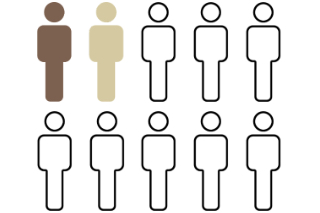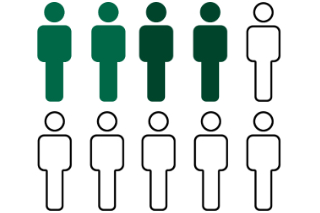About Us
Purpose
The purpose of the School Mental Health Collaborative: Research, Training and Technical Assistance Center (SMHC at USF) is to conduct research that informs policy and practice related to the social, emotional and behavioral success of all students and to support the implementation of evidence-based mental health practices in educational settings.
The SMHC advocates a dual-factor model of mental wellness that promotes student well-being and resilience factors while addressing mental health challenges and risk factors. Students with complete mental health exhibit signs of well-being, such as happiness and strong relationships, and conversely exhibit few signs of mental health challenges, like symptoms of depression, anxiety, or behavior problems.
Complete Mental Health (adopted from Florida AWARE, Complete Mental Health; Suldo & Romer - PDF)
The Need
American youth are experiencing mental health challenges at unprecedented levels.

Approximately 20% of school-age children and youth have a diagnosable mental health disorder, 10% exhibiting severe impairment.

42% of high school students in the U.S. reported signs of depression, 22% seriously considered suicide, the 3rd leading cause of death in youth 15-19.

An estimated 70% of children have experienced some type of physical or emotional trauma.
There is a critical need for research and dissemination of accessible, feasible, and evidence-based assessments and interventions that promote student well-being and resiliency, mitigate the impact of mental health challenges, and foster student academic achievement in the school setting.
- School is the setting where students spend the majority of their day.
- The school setting is the most common place for children to receive mental health services.
- The majority of mental illnesses emerge in children, yet fewer than half of the children receive treatment.
- Schools foster students complete mental health by prioritizing practices that promote well-being among all students to reduce subsequent risk.
- Students from low-income families and racial/ethnic minority groups are more likely to use school-based services.
- Schools have the capacity to provide and monitor interventions/treatment in a natural environment.